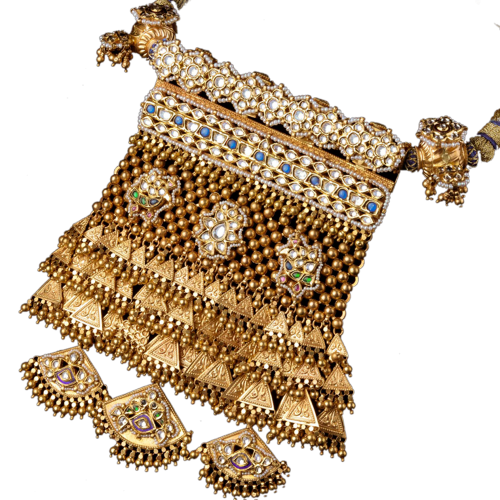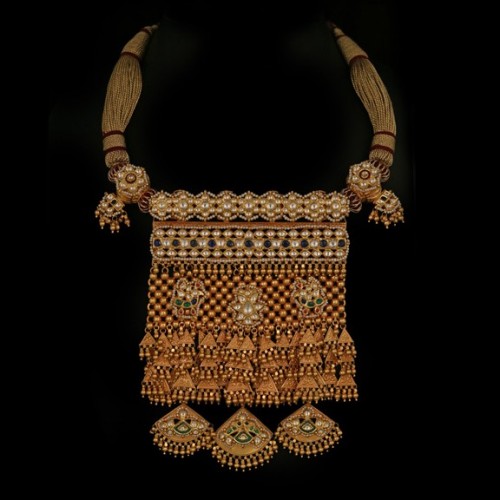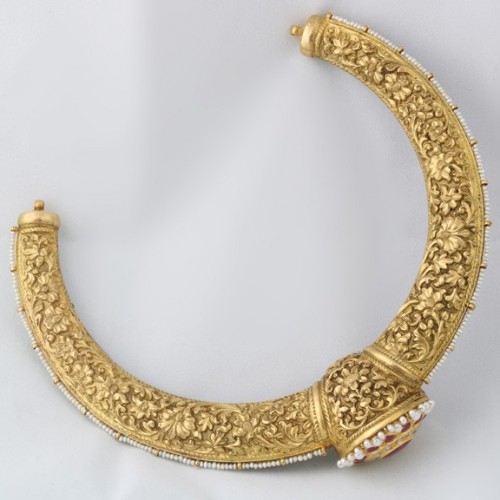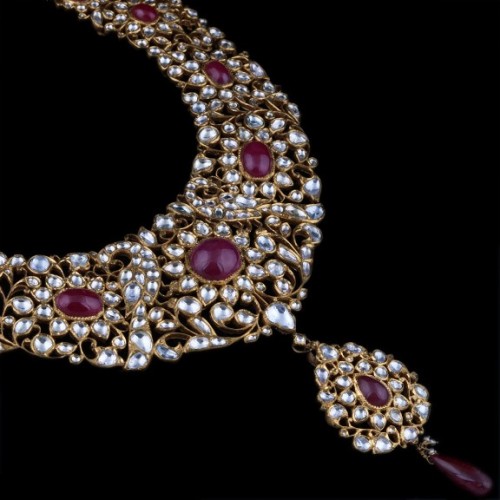Cart
No products
Prices are tax excluded
Monday to Saturday from 11 AM to 8 PM
We are closed on Sundays
The process of fashioning jewellery in India involved various techniques. The metal required for fashioning the ornament has to be first examined for its purity through a special technique. The conventional process of assessing was to rub the metal on the touchstone(kasauti), which left a mark of a certain colour suggesting the purity of metal o...
The process of fashioning jewellery in India involved various techniques. The metal required for fashioning the ornament has to be first examined for its purity through a special technique. The conventional process of assessing was to rub the metal on the touchstone(kasauti), which left a mark of a certain colour suggesting the purity of metal or the ornament of alloy of other metals contained in it. Alloying is necessary to give a certain hardness to the metal for working intricate patterns and designs on it. Gold is normally alloyed with copper or silver. Different parts of an ornament were joined together by soldering and the solder is prepared with the mixture of gold, silver and copper.
The different types of works in fashioning Indian jewellery can be derived into four categories. Firstly, the Goldsmith (sonar) is melting down the metal and then formed it into the desired shape or form of an ornament. Secondly the patterns are brought out by engraving or embossing on the metal. Thirdly enamelling on the back side and assembling all the pieces of an ornament and fourthly, the studding of the gems. After all those process have been completed the ornament sent for polishing for its final touch or beautification.
Gold was synonymous with life and wearing of gold ornaments was believed to ensure long life. Irrespective of social standing or wealth, gold was coveted and worn by all in India. Even amongst the poor, who usually wear silver, brass or bronze ornaments they also try to wear a simple pair of earrings, a bangle, and amulet or a mangalsutra.
- Out of stock
The Rajasthani 'Aad' - a necklace that originated during the Mughal era, the emperors loved... The Rajasthani 'Aad' - a necklace...
₹ 1,020,000.00 - In Stock
Hasli Necklace is one of the form or rigid necklace decorated with deep engraved carvings on both... Hasli Necklace is one of the form or...
₹ 735,000.00 - In Stock
Art that Understands the psyche of a woman, Craftmanship that reflects her soul by influence of... Art that Understands the psyche of a...
₹ 913,000.00




